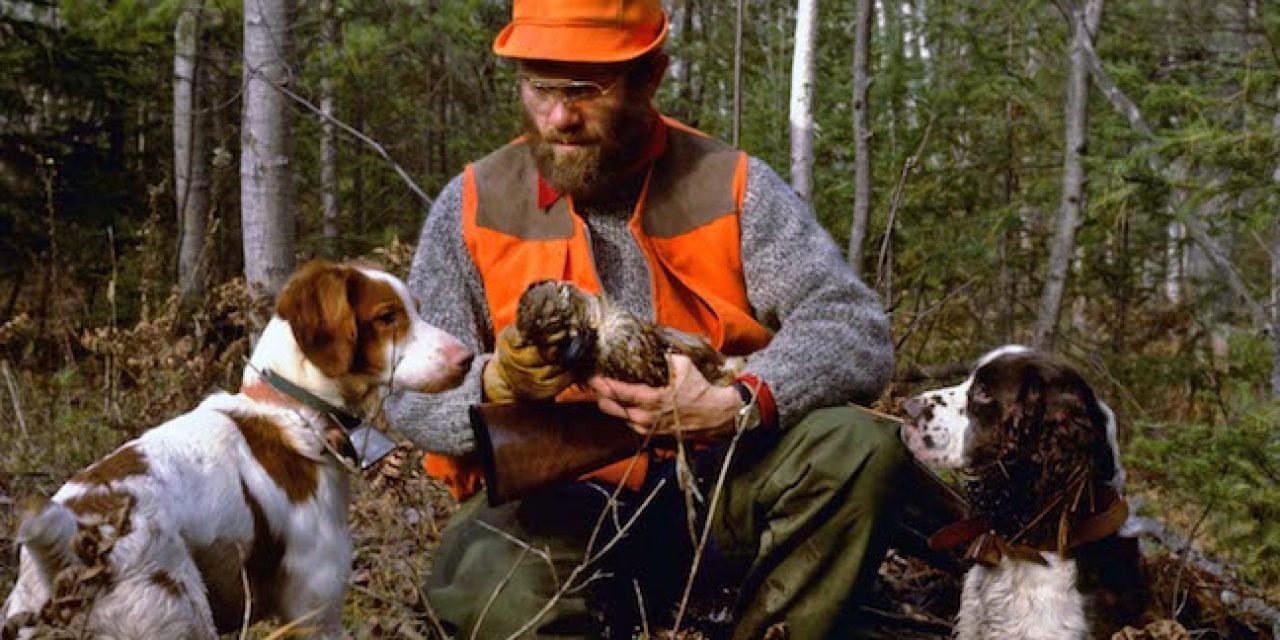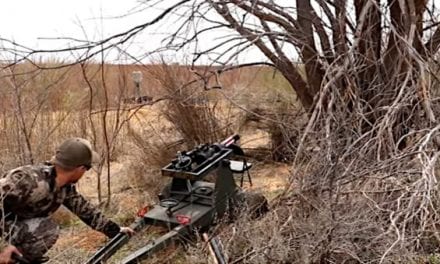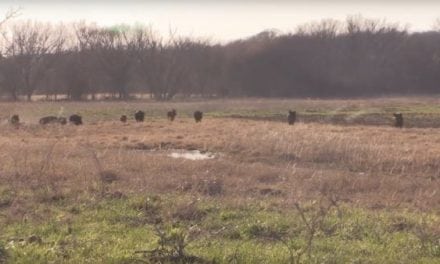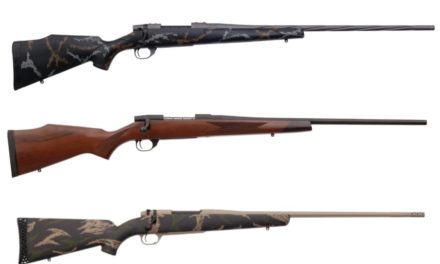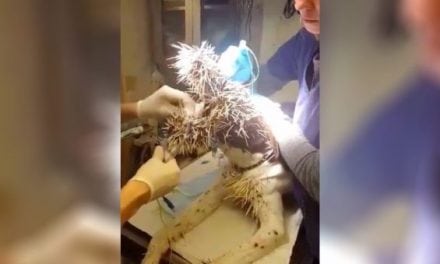Not all the best grouse hunting is found on private property. Here are some great places to hunt on land open to everyone.
Ahhhhhctober!
When tamaracks shower a visitor with golden needles, aspens wave their faded flags against an azure sky, and dried bracken crunches beneath a booted foot, the grouse hunter in me knows it is time to walk the woodlands, shotgun poised for the flush that, no matter how much I anticipate it, always startles.
Wisconsin’s grouse season opened in mid-September, but summer heat, thick foliage and lingering mosquitoes can make a September hunt more of a chore than a pleasure. Now that cooler weather has arrived and the foliage has thinned mercifully, a dog can hunt half a day without tiring and a hunter stands half a chance of getting a shot at a fleeting grouse.
In A Sand County Almanac, Wisconsin conservation pioneer Aldo Leopold wrote, “There are two kinds of hunting: ordinary hunting, and ruffed grouse hunting.”
Those of us who tramp the alder thickets and aspen uplands know what he meant, and we are always on the lookout for new coverts and that perfect place to hunt the king of game birds.
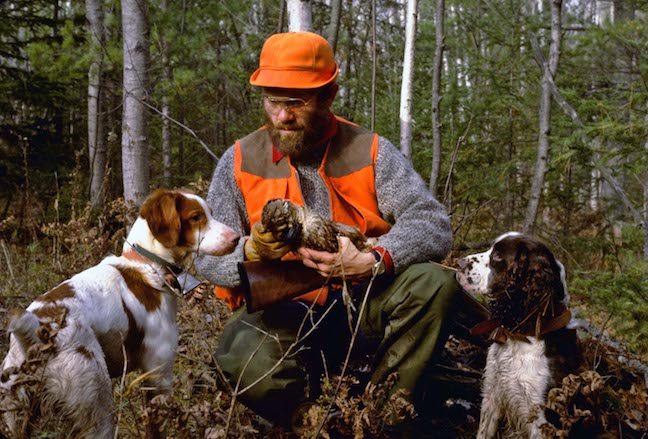
The late John Brennan with his Brittany Newton, left, and the author’s English springer Soubic admire a grouse taken in northern Wisconsin. (Photo by Dan Small)
In Leopold’s day, that place was Adams County, which northbound hunters saw as “only a waste of jack pines and scrub oaks.” The state highway took the easy route through these sandy barrens, but it crossed a series of tiny creeks, each of which began in “a broad ribbon of swamp, a sure haven for grouse.”
Leopold would follow these creeklets to their headwaters and hunt the orchards and pasture fringes of abandoned farms, where he found grouse in sufficient numbers to warrant an outing or two in the prettiest of months.
Today, Adams County would not be my first choice for a grouse hunt. The creeks are still there, but the scrub oak and jack pine have grown up beyond grouse cover stage and swallowed the abandoned farms. You’ll find a grouse here and there, but for today’s best grouse hunting, you’ll have to head farther north.
Fortunately, Wisconsin has an abundance of public land in federal, state and county forest. Much of this forest land is too mature to support grouse, but clearcutting of aspen in many areas has created a patchwork of mixed-age trees that provide excellent grouse habitat. And because this is all public land, it is all open to hunting.
NATIONAL FOREST
Park Falls, located in the heart of Price County, has called itself the “Ruffed Grouse Capital of the World” for several decades. A public-relations move aimed at attracting out-of-state hunters, this designation is accurate enough, but several other northern counties could just as easily claim the title.
Price County boasts more than 300,000 acres of public forest land, the biggest chunk of which lies within the boundaries of the Chequamegon-Nicolet National Forest.
The Chequamegon-Nicolet covers more than 1.5 million acres in 11 counties. The forest is divided into six ranger districts, each with an administrative office. If you plan to camp, there are several dozen campsites within the CNNF. No fees or special permits are required to hunt on CNNF lands, but some designated campsites charge a daily fee.
Free maps of each ranger district are available at district offices. There are interactive maps, along with information on hunting, camping and other recreational opportunities on the CNNF website.
Several ranger districts publish color-coded maps that show wildlife openings, and oak and aspen stands. Aspen stands are color-coded by age, so you can key in on young stands, which hold more grouse early in the season, and mature stands, which are good spots for late-season grouse.
The most productive grouse hunting can be found along the many recreational trails that wind through the forest. Some of these are multi-use trails, but a number of them are designated as hunter-walking trails.
These trails are gated to keep out motorized vehicles, planted to clover and mowed once a year to keep vegetation down. Many of them traverse aspen stands and other habitat types managed specifically for grouse and other game species.
Detailed descriptions and maps of many of these trails are available at forest offices and online.
A typical trail has one or more trailheads located on county highways or forest roads. Most trails loop through good habitat or connect with other trails, which allows you to hunt new cover for your entire outing, rather than backtrack over ground you have already hunted.
Grouse often feed on the succulent greens on the trails early and late in the day, and then hunker in adjacent brush during midday hours. Hunters with dogs can walk the trails and send the dogs into cover on both sides.
Dogless hunters can get decent shooting by putting one hunter on a trail and a second hunter 20 yards or so off the trail. When you come to a young aspen grove, cedar thicket or alder seep, make a swing through it. Grouse hold in such cover, especially on warm afternoons.
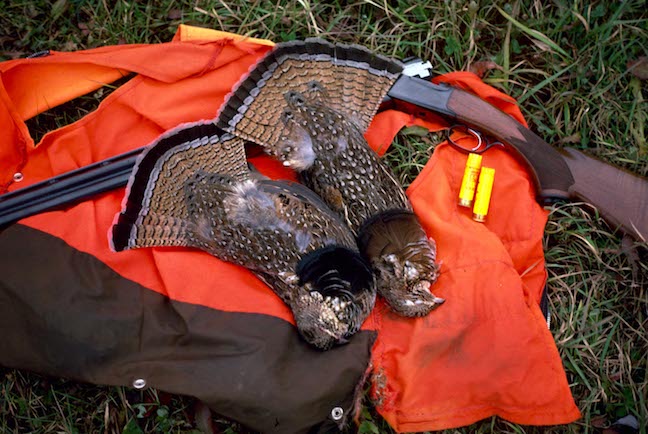
A Ruger Red Label in 20 gauge accounted for these Wisconsin grouse. (Photo by Dan Small)
The DNR manages several state forests, 50 state parks, 683 state natural areas, and more than 200 wildlife management areas, many of which have good grouse habitat. Hunting is allowed on most of these properties, except near campgrounds and other closed areas. A daily or seasonal vehicle admission sticker is required in most of those properties.
These can be purchased at any DNR office or license outlet, or online through the Go Wild! system. Conservation Patron license holders receive a sticker with their license purchase.
From north to south, top state forests for grouse hunting include Brule River, in Douglas County; Flambeau River, in Sawyer, Rusk, Price, Ashland and Iron counties; Northern Highlands American Legion, in Vilas and Oneida counties; Peshtigo River, in Marinette County, and Black River, in Jackson County.
The Brule River State Forest encompasses 47,000 acres, of which 14,000 are in aspen. This is some of the wildest and most rugged country in the state. The forest includes 44 miles of the famed Bois Brule River, two campgrounds, and five state natural areas. There are 60 gated hunter walking trails that traverse prime grouse habitat.
Some 120,000 people visit the forest annually, but most visitors paddle or fish the river, so the forest sees relatively few grouse hunters compared to more popular areas.
At 91,000 acres, Flambeau River State Forest is the state’s second-largest property. It includes 75 miles of the Flambeau River. Some 2,200 acres are cut annually through timber sales.
A proposed 3,800-acre habitat management area near the southern end of the property will focus on aspen and other early successional species, primarily for grouse. A color-coded map that shows aspen stands and the date they were cut is perhaps the most helpful map of this vast forest.
Black River State Forest straddles the line of demarcation between the unglaciated Driftless Area of southwest Wisconsin and the rest of the state, which was heavily marked during the last Ice Age, some 10,000 years ago. Because of its unique location, its topography varies from rugged cliffs and outcroppings to sand plain and marsh.
Although its 68,000 acres and its proximity to Madison, La Crosse, Eau Claire and Minnesota’s Twin Cities make it a popular recreation destination, I have rarely encountered another grouse hunter there. Look for grouse in areas with mixed forest cover: aspen, of course, but also jack pine and scrub oak, and anywhere you find alders.
Top wildlife management areas include George Mead (33,000 acres), in Marathon, Wood and Portage counties; and Meadow Valley (58,000 acres), Wood County (21,000 acres) and Sandhill (9,150 acres) in Wood County. Sandhill is the site of many years of grouse research conducted by retired DNR biologist John Kubisiak. Numerous research projects have been conducted there over the years, including a series of experimental deer hunts.
The best grouse hunting on all of these central Wisconsin WMAs occurs on the wooded “islands” of upland habitat surrounded by wetlands, which makes them hard to get to until freeze-up. Winter hunting there can be phenomenal, as grouse are concentrated on the islands.
Information and maps of all state properties can be found online at dnr.wi.gov. Type in keywords “State Forests,” “State Parks,” “State Natural Areas” or “Wildlife Management Areas.”
COUNTY FORESTS
Some of the largest blocks of grouse cover in Wisconsin are found in county forests. Twenty-nine counties, most of them in the northern third of the state, manage 2.4 million acres for timber production, water conservation and recreation. When I lived in northern Wisconsin many years ago, I regularly hunted Bayfield County forest land and did quite well on grouse.
I have no doubt the area remains among the state’s most productive. Nearby Ashland, Douglas, Price, Sawyer and Iron counties also have large blocks of county forest land, primarily in aspen.
County forest administrators manage timber sales and publish maps showing public access points, walking trails, and habitat types. They can be contacted at wisconsincountyforests.com.
RUFFED GROUSE SOCIETY
In addition to habitat management conducted by federal, state and county governments, the Ruffed Grouse Society has funded more than 700 Management Area Projects in 28 states, totaling well over 500,000 acres. About 100 of them are located in Wisconsin. These MAPs range in size from 20 to more than 8,000 acres.
They are all listed on the RGS Web site, ruffedgrousesociety.org, although details are available only to current RGS members. These MAPs all have on-site signage that tells the size and orientation of the project. Because they are so visible, they are hunted fairly hard, but adjacent habitat on public lands hold grouse chased off the MAPs by hunters.
GUIDES & ACCOMMODATIONS
There are not many guides who specialize in grouse hunting, but several stand out. In Price County, Ides Guides is the area’s oldest guide service hunting exclusively for grouse and woodcock, operating since 1977. Founder Terry Ides was instrumental in naming Park Falls the Ruffed Grouse Capital of the World. Ides offers a full day of hunting with their trained dogs or yours, plus lunch and bird cleaning for $600 for two hunters. Contact idesguides.com.
Also in Price County, Flambeau Forest Outfitters offers a similar package for the same price. Contact flambeauforestoutfitters.com. And in Oneida County, Upland Pursuit offers the same deal. Contact uplandpursuit.com.
In the Cable area, Classic Bird Hunts offers superb hunts on public land over Brittany spaniels in the Chequamegon National Forest with Orvis-endorsed guides, plus a gourmet lunch, for $700 per day for one hunter and $900 for two. Lodging is available as well. I have hunted with this outfitter and can honestly say it is worth the cost.
CBH and Flambeau Forest Outfitters also offer fishing and cast-and-blast packages, and all of these outfitters can arrange lodging, meals and travel accommodations.
SEASON DATES AND OUTLOOK
This year’s grouse season runs from Sept. 16 through Jan. 31 in Zone A, which comprises most of the state. In Zone B, which is basically southeast Wisconsin, the season runs from Oct. 14 through Dec. 8. The bag limit is a generous five birds per day in Zone A and two per day in Zone B.
As of this writing, spring drumming counts were being finalized, but anecdotal reports indicate grouse numbers are on the upswing after bottoming out a couple of years ago. All indications point to good numbers of birds this season, especially in the better coverts, but that’s where you plan to hunt, isn’t it?
DON’T SHOOT A SPRUCIE!
If you hunt grouse in coniferous cover in the northern two tiers of counties in our state, you might encounter a spruce grouse, a protected species that cannot be hunted.
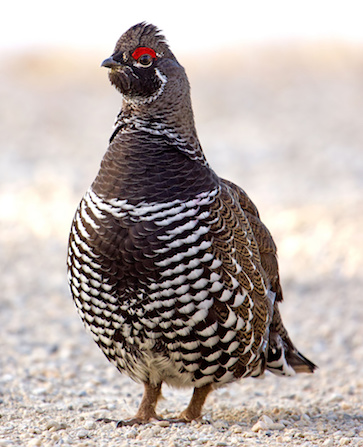
Spruce grouse (Shutterstock image)
Spruce grouse are most often found in spruce and tamarack bogs, but they also occur in upland conifers, especially jack pine.
Male spruce grouse are mostly black, with white barring on the breast.
The tail is black with a rust-colored tip. Females are brown with horizontal barring on the breast.
Unlike ruffed grouse, which usually flush when approached, spruce grouse often will allow a close approach by humans.
The post The Public Side of Wisconsin Grouse Hunting appeared first on Game & Fish.

